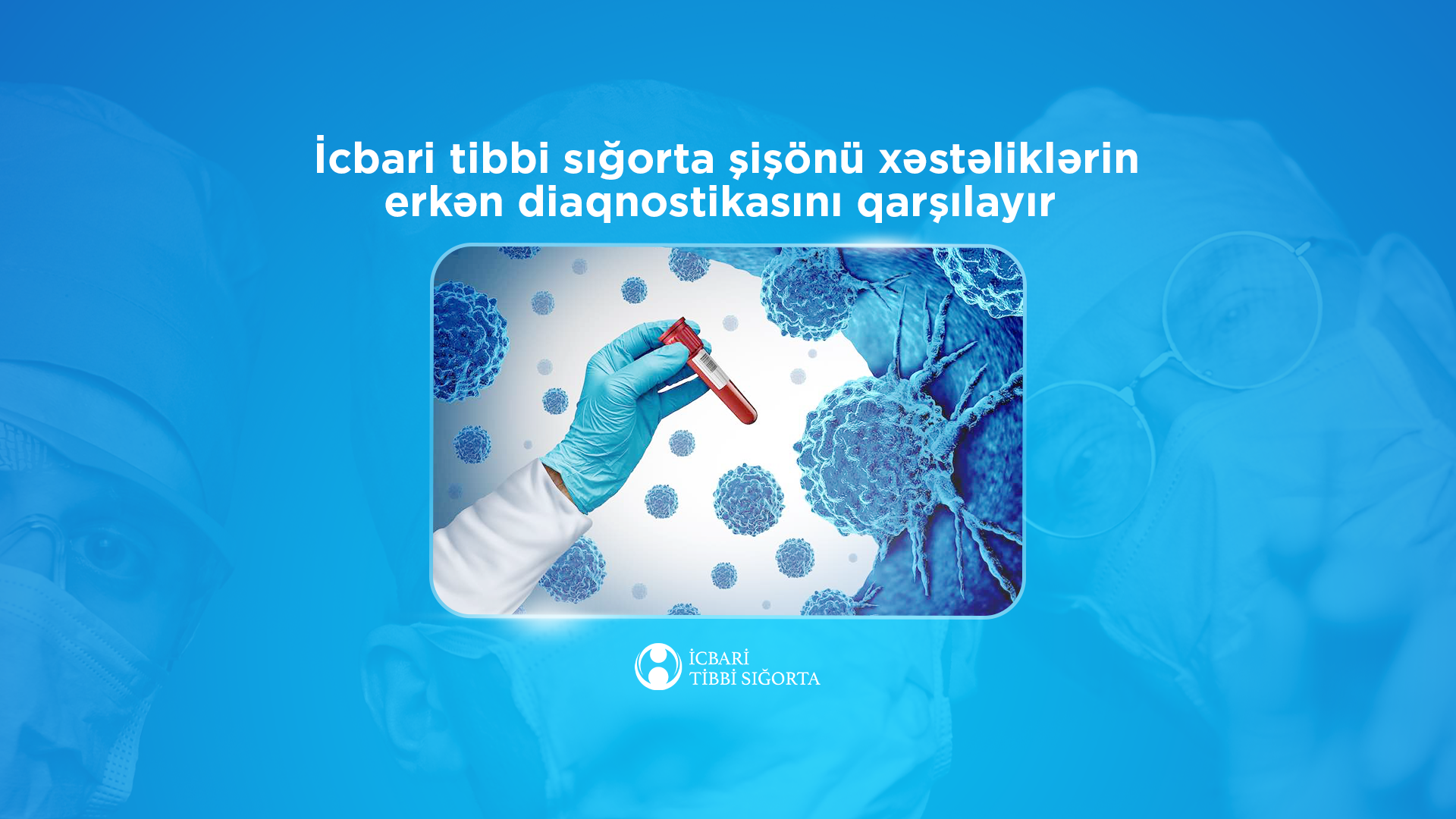 1542
1542 Mandatory health insurance covers early diagnosis of pretumor diseases
12.08.2024, 09:34
Mandatory health insurance provides early diagnosis for pretumor diseases caused by atypical cell changes that carry a high risk of developing into cancer. These atypical cells often replace normal cells, damaging them, rapidly proliferating, and potentially spreading to other parts of the body. Inflammatory diseases associated with these changes can develop in various organs and tissues. Detecting and treating these diseases early is crucial in preventing cancers that may arise in the future.
Mandatory health insurance covers functional diagnostics, radiation diagnostics, laboratory tests, and endoscopic examinations. These methods enable accurate diagnosis, evaluation of the functional state and internal structure of organs, and the study of chemical and physical processes in the body, including direct visual examination of internal organs. Multiple key diagnostic methods are used to ensure reliable detection of pretumor diseases, each offering high sensitivity and accuracy for specific conditions.
Magnetic resonance imaging (MRI) provides detailed imaging of the body’s internal structures and is especially valuable for detecting pretumor changes in soft tissues. MRI often reveals abnormalities that may indicate early-stage pretumor activity. Computed tomography (CT) scanning, another diagnostic method, delivers detailed images of different parts of the body, making it especially useful for locating and sizing tumors, particularly in solid tissues and organs.
Colonoscopy is a widely used diagnostic tool for the early detection of pretumor lesions with a high risk of developing into colorectal (colon and rectal) cancer. During this procedure, the doctor uses an endoscope to examine the inner walls of the colon. If any suspicious areas are identified, biopsy samples are taken for further laboratory analysis. This process aids in diagnosing pretumor or cancerous changes at an early stage, which is essential for effective treatment.
Gastroscopy is a diagnostic method that allows visualization of the stomach and duodenum, helping to detect pretumor changes in these areas. Through this procedure, doctors can observe the upper gastrointestinal tract and identify early signs of abnormal growths or tumors.
Colposcopy is a high-precision gynecological examination method used to detect cervical cancer and precancerous diseases at an early stage. This examination utilizes a colposcope to magnify and visually assess the cervix. If suspicious areas are detected, biopsy samples are taken for laboratory analysis to confirm or rule out the presence of pretumor changes.
Hysteroscopy is a modern and essential method for protecting women's health and enabling early diagnosis. During this procedure, a hysteroscope is inserted into the uterine cavity, and the image is transmitted to a screen in real time, allowing the doctor to observe any pathology within the uterus. This technique is not only useful for identifying various gynecological diseases but also plays a critical role in detecting uterine cancer and pretumor conditions.
Mammography is an important diagnostic tool that uses X-rays to examine the mammary glands and surrounding lymph nodes. This method enables the early detection of precancerous conditions in the breast, allowing for timely treatment to prevent the progression to malignant cancer.
Microscopic analysis of tissue samples taken from atypical cells, identified as pretumor lesions, is considered the gold standard in diagnostic accuracy. This method allows a detailed examination of cell structure to identify any abnormalities that may indicate cancer risk. Additionally, the level of specific biomarkers in the blood can signal the presence of certain diseases. The measurement of oncomarkers in the blood is particularly useful for detecting certain pretumor conditions at an early stage and for monitoring disease progression. The Pap smear test is another widely used diagnostic tool that assists in early detection of cervical cancer in women.
The introduction of mandatory health insurance aims to facilitate early detection of diseases, ensure timely treatment, and improve the overall health of the population. Citizens covered by mandatory health insurance can access these medical services by presenting an ID card at any state medical facility under TABIB or at one of the nine research institutes under the Ministry of Health of Azerbaijan.
Last News
Allergiyaların diaqnostika və stasionar müalicəsi icbari tibbi sığorta hesabına göstərilir

Mərkəzi Neftçilər Xəxtəxanasına müasir tibbi avadanlıqlar ianə edilib

Ağciyərlərə yığılmış mayenin çəkilməsi məqsədilə 5643 prosedur icra olunub

Pirallahı Tibb Mərkəzinə media-tur təşkil olunub

“Yanıq yaralarının müalicəsi” mövzusunda təlimə start verilib

MRT və KT müayinələri üçün yeni ödəmə qaydası tətbiq olunacaq

Zaur Əliyev Ağcabədi rayonunda vətəndaşları qəbul edib

İcbari tibbi sığorta ilə 50 mindən artıq angioqrafiya müayinəsi aparılıb

Türkiyənin Sosial Müdafiə Qurumunun nümayəndə heyəti Azərbaycana səfər edib

Qadınlarda yumurtalıq xərçəngi riskini azaldan əməliyyat icbari tibbi sığorta təminatına daxildir


 View all news
View all news 